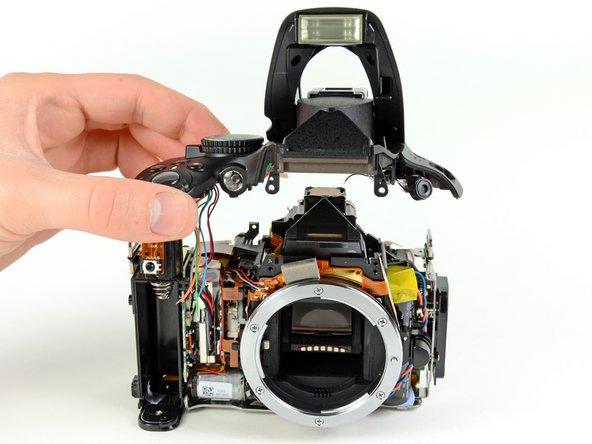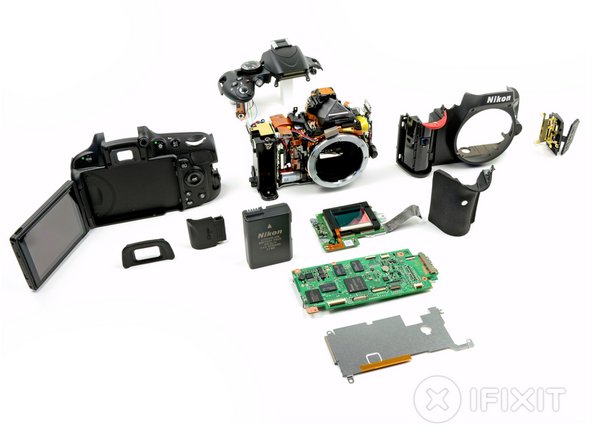
They were desperate for something more mechanically complex to chew on than the cell phone and tablet fare we’ve been feeding them lately. And we knew exactly where to turn. We’ve already written a Nikon D70 repair manual, so we know first-hand how difficult it is to take apart a professional SLR camera.
What better way to infuse a bit of fun in our teardowns than taking apart another SLR camera? Enter the just-released Nikon D5100.
Teardown highlights:
- The D5100 utilizes a 16.2 megapixel DX format CMOS sensor to capture images. This sensor has the same specs of the sensor used by the Nikon D7000.
- Chipworks reports that each pixel on the sensor is 4.8 µm wide. That’s about half the diameter of a red blood cell.
- The sensor has a special glass cover that turns red when viewed at an angle, but is completely transparent when viewed head-on. Neat!
- Unlike other recent teardowns, the battery can be easily replaced by opening the compartment with your thumbnail.
- The 7.4 V 1030 mAh EN-EL14 Li-ion battery is used by the D5100, D3100, and the COOLPIX P700. Sadly, it’s not compatible with other cameras in the Nikon lineup, such as the D90 and D7000.
- Definitely make sure to discharge the large-and-in-charge 330µF flash capacitor if you attempt any repairs on the D5100. Otherwise you risk accidentally killing your camera.
- The camera has roughly 4 billion screws holding it together. We had to skip a lot of the “unscrewing this screw” pictures in order to keep the teardown interesting, since we took out 37 of them to get to the teardown layout shot.
- You can easily access the motherboard by removing the rear cover. You just need to remove twenty-ish #00 Phillips screws, disconnect 9 ribbon cables, and desolder a few wires…
- The D5100 contains a lot of the same chips found in the Nikon D7000. Key players include:
- Nikon EXPEED 2 EI-154 1051 Z05 image processor
- Samsung K4T1G164QF-BCE7 1Gb DDR2-800 SDRAM (total of 3 Gb = 375 MB)
- MXIC MX29GL128EHXFI-90G 128 Mb parallel flash memory
- Toshiba TMP19A44FEXBG low-power microcontroller
- Nikon EI-155 M4L1BA00 00151044
- Nikon NHHS-2 049M8
- There’s a light blue pad wedged between the bottom of the flash capacitor and the bottom camera frame. It conducts heat away from the capacitor to cool it down during flash-intensive shooting.
- The top cover is a feat of engineering by itself. Within its walls are contained: Main control wheel, shutter/aperture control wheel, live view lever, On/Off switch, “info” button, record button, shutter button, exposure compensation button, IR sensor, AF lamp, flash, flash control circuitry, flash actuator, and the microphone.
- The flash is actuated by a linear solenoid that pushes on a lever to release the spring-loaded flash — either automatically if the sensor detects a low-light situation, or when the flash button is depressed.






0 opmerkingen